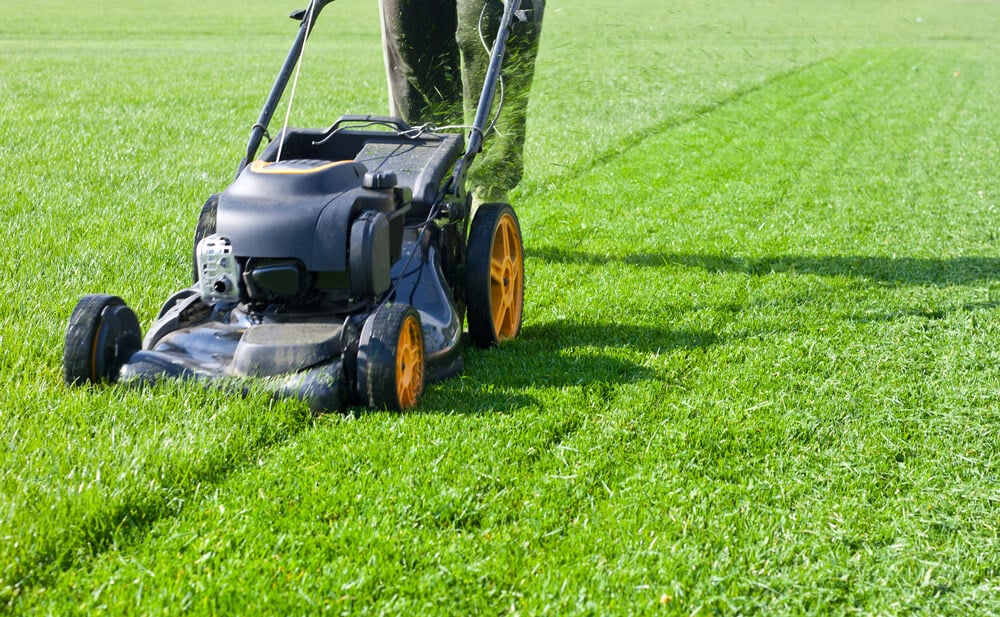Imagine the tranquility of a beautifully designed lawn, every element in harmony, creating a stunning scene right outside your door. One of the key components in achieving such a vision is learning how to effectively incorporate hardscaping into your new lawn design.
The delicate balance of hardscaping elements—those sturdy, non-living features—can enhance your outdoor living space’s overall aesthetic and functionality. Whether it be a stone pathway guiding your steps or a rustic wooden pergola casting dappled shade, hardscaping breathes life into your garden without overshadowing its natural charm.
Hardscaping plays a crucial role in any landscaping design. It offers structure, creates pathways, and provides a beautiful contrast to your garden’s lush greenery and vibrant blooms.
But how do you incorporate these inorganic elements without disrupting the organic beauty of nature? How do you create a space that invites, inspires, and instills a sense of peace? This is the art of landscaping. Let’s embark on this journey together, learning how to seamlessly incorporate hardscaping into your new lawn design, creating an outdoor sanctuary that’s uniquely yours.
Hardscaping Defined
When you step into your garden, what do you see? A lawn of lush green grass, a burst of colors from the flower bed, the towering trees casting a comfortable shade. But is that all? Pause for a moment and consider the unseen heroes of your landscape: the hardscaping elements.
Hardscaping, in the world of landscaping, refers to the non-living, structural elements that lend stability and structure to your outdoor spaces. These can be man-made, like a stone walkway, a wooden deck, a metal arbor, or naturally occurring, like boulders and rock formations.
While plants are the life of your garden, hardscaping is its backbone. It lays the foundation for paths to guide your steps, shapes your garden’s borders, and forms the base of your outdoor living spaces. It’s the stone wall protecting your flower bed, the wooden bench under the old oak tree, the glass table on your patio, and the brick fireplace warming up your outdoor gatherings.
These elements, while silent, work in harmony with your plants, creating a perfect symphony of nature and design. So, let’s dive deeper and explore the wondrous world of hardscaping and the myriad ways it can transform your lawn into a functional yet aesthetically pleasing outdoor oasis.
Striking the Balance: Hardscaping and the Natural Environment
Picture this: a patio nestled amidst blooming landscape beds, the rustling leaves whispering stories in the wind, the hardscaping elements gently framing the scene. It’s a tableau of balance—of hardscaping marrying the natural environment to craft a serene and inviting space. Striking this balance is both an art and a science, requiring careful consideration of your landscape’s materials, space, and unique features.
Think of hardscaping as the stage on which the drama of nature unfolds. The key is to let it guide without dictating, to enhance without overpowering. It’s about creating spaces that embrace you yet set you free to explore. This intricate dance between the organic and inorganic, the living and the non-living, is what makes a garden truly mesmerizing. So, how about transforming your backyard into a patio surrounded by lush landscape beds? A spot where you can sip your morning coffee, surrounded by fragrant blooms, while the sun casts a warm glow on the stone pathway. Visualize it, plan it, and watch as your lawn turns into a canvas that blends hardscaping and the natural environment in a symphony of balance and beauty.
Essential Tips for Hardscaping Your Lawn
As we embark on transforming your lawn through hardscaping, let’s arm ourselves with some essential tips. These navigational tools guide you as you weave in the hard elements with the soft, living parts of your landscape. Are you ready for this adventure to create your personal Eden?
Here are six top tips to keep in mind when incorporating hardscaping into your lawn design:
- Incorporating color: Adding color to your hardscape can make it more appealing and enhance its visual connection with the surrounding landscape. Consider materials with hues that complement the color palette of your home and plants.
- Using lines: Lines guide the eyes. Straight lines create a formal look, while curvy lines offer a relaxed, natural feel. Use lines strategically to create the desired mood and style.
- Planning for drainage: Water needs a place to go; your hardscape design should consider this. Ensure the layout of your hardscaping elements doesn’t obstruct water flow.
- Creating a focal point: Your hardscape should have a feature that catches the eye—a statue, a fountain, a beautifully-arched pergola, or a seating area crafted from natural stone, for instance.
- Considering scale: The scale of your hardscaping elements should harmonize with your house, yard, and other landscape features. Remember, the ultimate goal is balance.
- Ensuring the design complements the house’s exterior: Your hardscape is an extension of your home and should be aesthetically connected. Match or complement the colors, textures, and styles of your house’s exterior in your hardscaping.
So there you have it, the six golden rules of hardscaping your lawn. Let’s roll up our sleeves and begin this exhilarating journey to create a space that’s uniquely you, blending the solidity of hardscape with your lawn’s ever-changing, ever-growing beauty.
2023 Hardscaping Trends
Just like fashion, hardscaping trends evolve with time. As we journey through 2023, new trends are beginning to shape how we interact with our outdoor spaces. Let’s explore these fresh ideas that are changing the hardscaping landscape.
Eco-Friendly Hardscaping
Eco-consciousness has swept into every industry, including hardscaping. Recycled materials, permeable pavers for better water management, and locally-sourced stones are favored. These choices aren’t just eco-friendly but also beautifully versatile, adding a unique character to your outdoor space.
Multi-Level Hardscaping
Why limit your vision to a single plane? Multi-level hardscapes are on the rise. From terraced gardens to split-level patios, height adds an exciting dimension to your outdoor space, offering more areas for entertainment, relaxation, and aesthetic appeal.
Natural Stone Hardscaping
There’s a resurgent love for natural stone’s authenticity and timeless elegance. From flagstone walkways to limestone retaining walls and marble patios, natural stone hardscaping and masonry brings a touch of wilderness to your home, creating a seamless blend between built and natural environments.
Outdoor Kitchens
Al fresco dining has taken a step further with the rise of outdoor kitchens. These spaces have become the heart of the yard, allowing for a full cooking and dining experience surrounded by the beauty of nature. It’s a trend that combines gastronomy with the great outdoors—what could be more delightful?
Fire Features
Whether it’s a fireplace for marshmallow roasting or a sleek fire pit that becomes the centerpiece of late-night gatherings, fire features continue to be a sizzling trend in 2023. They create a cozy ambiance, offer warmth for cooler evenings, and serve as a mesmerizing focal point.
So there you have it—five top trends shaping the world of hardscaping in 2023. These trends are all about connecting with nature, embracing sustainability, and transforming our outdoor spaces into versatile extensions of our living areas. Are you ready to incorporate these trends into your own backyard oasis?
FAQ
Let’s dive into some of the most frequently asked questions we encounter about hardscaping and lawn design. No matter where you are on your journey of transforming your outdoor space, we hope these insights can light the way. Remember, every question is a step closer to your dream yard!
What is hardscaping? Hardscaping refers to the non-living elements of landscaping, such as brick patios, stone walls, and wooden decks. It’s the backbone that adds structure and functionality to your yard.
How can I incorporate hardscaping into my lawn design? Hardscaping can subtly blend into your lawn design through pathways, seating areas, decorative boulders, retaining walls, and more. The key is to strike a balance between the natural elements (softscaping) and hardscaping for a harmonious outdoor space.
How do I choose the right materials for hardscaping? Consider factors such as the climate, your budget, maintenance requirements, and the style of your house. A mix of materials like wood, stone, and concrete can add texture and interest.
What are the latest hardscaping trends? In 2023, eco-friendly hardscaping, multi-level design, natural stone usage, outdoor kitchens, and fire features are trending. These concepts focus on creating versatile, sustainable, and cozy outdoor spaces.
How do I maintain my hardscape? Maintenance depends on the material used. Regular sweeping, rinsing, and occasional deep cleaning can keep most hardscapes looking good. For specific materials like wood, sealing might be required for longevity.
So, there you have it—answers to some of the most common hardscaping and lawn design questions. Don’t see your question here? Don’t worry; just contact us, and our A-Z Landscaping team would be happy to help. Because at the end of the day, it’s your questions that help us create better, more personalized outdoor spaces.






